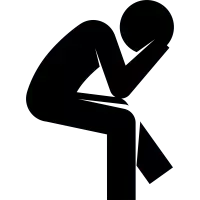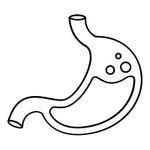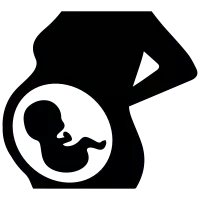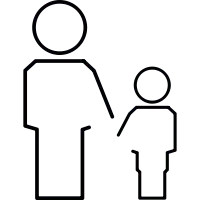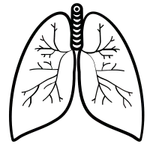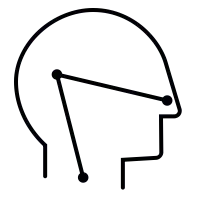Low Back Pain Treatment – Pain Management Clinic in Flamborough
Osteopathy Clinic has been proven that osteopathic manipulation can be an extremely powerful tool in treating a wide variety of conditions including musculoskeletal disorders such as lower back pain.
Osteopathy is a form of manual therapy that focuses on the musculoskeletal system, which includes the bones, muscles, and connective tissues.
Osteopathy can treat back pain and other musculoskeletal conditions. Osteopaths may use a variety of techniques to help relieve pain, improve flexibility and range of motion, and restore function to the affected area. They may also provide guidance on lifestyle changes and exercises to help prevent future episodes of back pain.
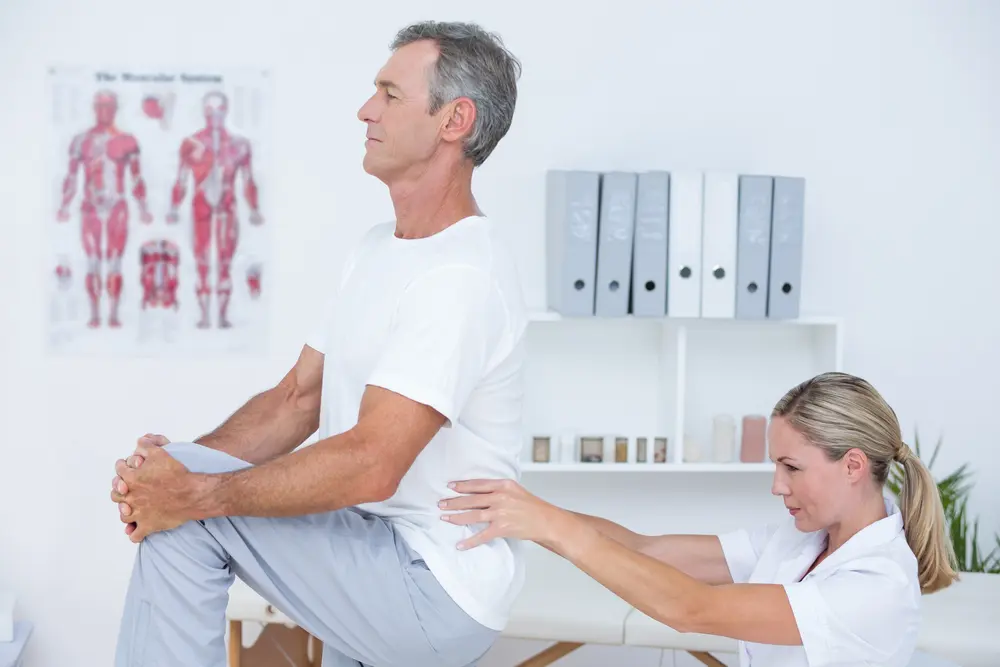
Causes of Back Pain:
Back pain is one of the most common complaints, affecting around 60% of the population at some point in their lives. It can be caused by a number of factors, including: herniated discs, osteoarthritis, spinal stenosis, and trauma. However, the majority of people experience back pain at some stage in their lives due to one or more of the following: poor posture, weak abdominal muscles, pinched nerves, and sport-related injuries. There are many possible causes of back pain, including:
- Muscle strain or sprain: This is often caused by overuse, improper lifting, or sudden awkward movements.
- Poor posture: Poor posture can put strain on the muscles and ligaments in the back and lead to pain.
- Degenerative changes in the spine: As people age, the discs between the vertebrae of the spine may become thinner and less able to absorb shock. This can lead to degenerative changes in the spine, such as herniated discs, osteoarthritis, and spinal stenosis.
- Joint Inflammation: Also known as arthralgia, is a type of pain, swelling, and stiffness in the joints caused by an underlying medical condition.
- Osteoporosis: This condition causes the bones to become weak and brittle, increasing the risk of fractures, including those in the spine.
- Scoliosis: This is a condition in which the spine curves to the side, causing back pain and other problems.
- Sciatica: Sciatica Nerve Compression is a common pain condition that can occur in the lower back, buttock, and/or leg.
- Spinal Infection: Spinal infection is a medical condition in which the spine becomes infected and inflamed.
- Herniated disc: This occurs when the soft center of a spinal disc bulges out through a tear in the outer layer, placing pressure on the nerves.
- Spinal stenosis: This is a narrowing of the space around the spinal cord, which can cause pressure on the nerves and lead to pain.
- Spondylolisthesis: This is a condition in which one vertebra slips out of place and onto the vertebra below it, causing pain and other problems.
- Other conditions, such as kidney stones, infections, and tumors, can also cause back pain.
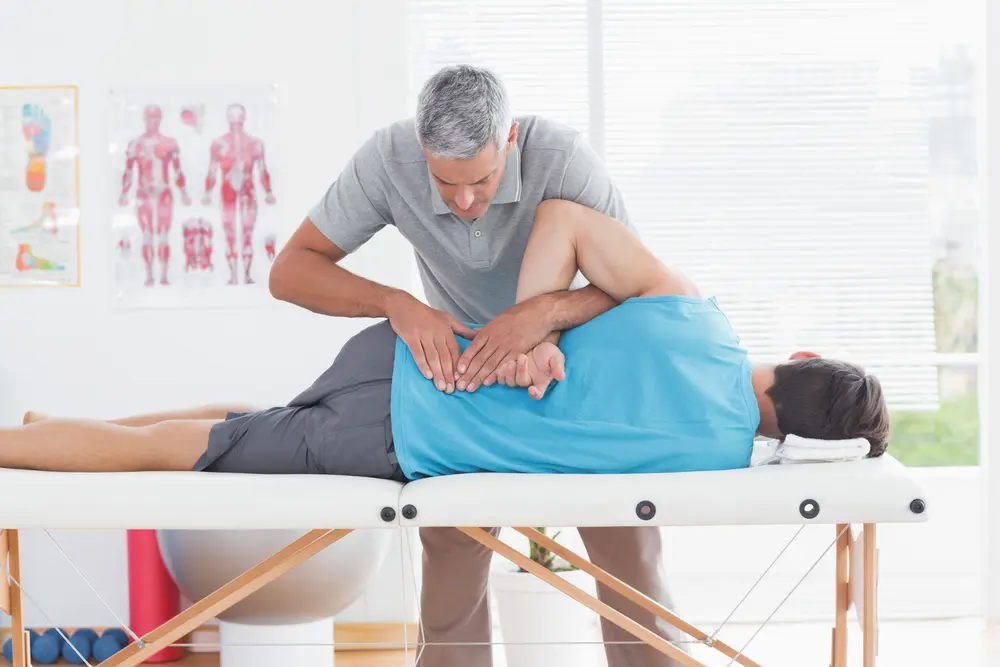
Muscle Strain or Sprain:
A muscle strain or sprain is a common cause of back pain. This type of injury occurs when the muscles or ligaments in the back are stretched or torn, often as a result of overuse, improper lifting, or sudden awkward movements.
Symptoms of a muscle strain or sprain may include:
- Pain, which may be dull or sharp, and may be worse when you move or touch the affected area
- Muscle spasms
- Stiffness or difficulty moving the back
- Swelling or bruising
- Tenderness when you press on the affected area
Degenerative Disc Disease, changes in the spine:
Degenerative changes in the spine, such as herniated discs, osteoarthritis, and spinal stenosis, can cause back pain. These changes are often the result of wear and tear on the spine, and they are more common as people age.
Herniated discs occur when the soft center of a spinal disc bulges out through a tear in the outer layer, placing pressure on the nerves and causing pain.
Osteoarthritis is a degenerative joint disease that causes the cartilage in the joints to wear away, leading to pain and stiffness. The spine is one of the joints that can be affected by osteoarthritis.
Spinal stenosis is a narrowing of the space around the spinal cord, which can cause pressure on the nerves and lead to pain.
Osteoporosis:
Osteoporosis is a condition that causes the bones to become weak and brittle, increasing the risk of fractures, including those in the spine. People with osteoporosis are at increased risk for developing back pain, especially if they have had a spinal fracture.
Osteoarthritis is caused by the wear and tear of cartilage in the joints. The cartilage gradually breaks down, becoming less elastic and producing pain and stiffness. Osteoarthritis can develop anywhere in the spine, but it most commonly affects the lower back. The main causes of osteoarthritis are aging, weight gain, genetics, and injury. The condition is caused by repeated damage to the joints in the spine, which can be from trauma, arthritis, or a disease like cancer.
Sciatic Nerve compression is the most common cause of leg pain, particularly in older adults. This condition, also known as sciatica, can be caused by degenerative changes in the disc between the vertebrae (spondylosis) and or the fa. Degenerative changes in these discs can lead to nerve compression, which is often resultant of pain from nerve root irritation. If you experience any of the following symptoms, it is important to get them checked out and treated: weakness in both legs; difficulty walking more than a certain distance; pain when you walk or stand; swelling or redness in your feet or ankles; these could all be signs of arthritis. Arthritis is a condition that causes inflammation and pain in the joints. It can be caused by a number of factors, including age, injury, genetics, and lifestyle choices.
Symptoms of osteoporosis includes:
- Back pain, which may be dull or sharp, and may be worse when you move or touch the affected area
- Loss of height over time
- A hunched posture
- Fractures that occur more easily than expected
Risk factors for developing osteoporosis include advanced age, being female, having a family history of the disease, and having a low bone density.
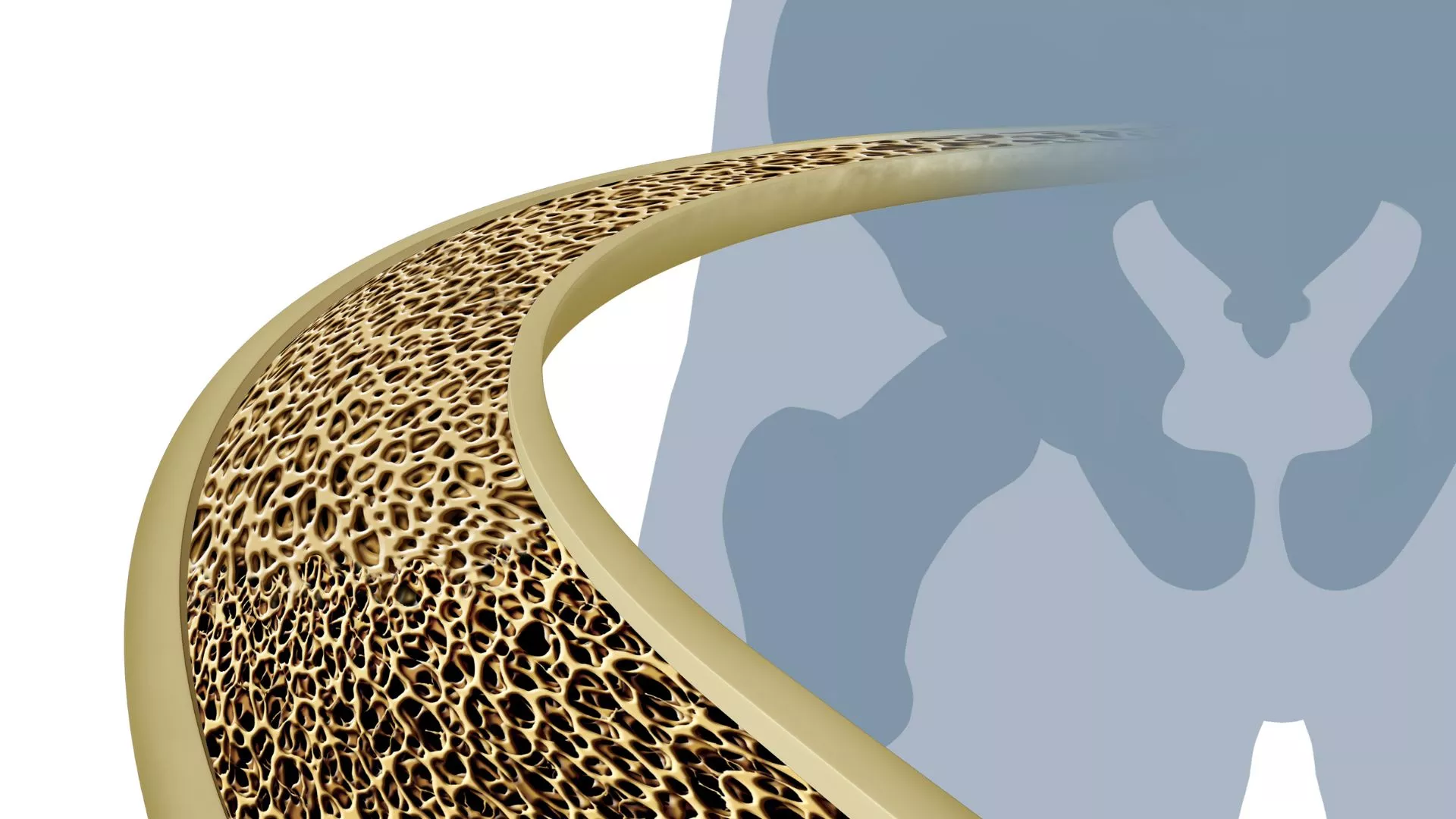
Scoliosis:
Scoliosis is a condition in which the spine curves to the side, causing back pain and other problems. It is typically diagnosed during childhood or adolescence, but it can also develop in adulthood.
Symptoms of scoliosis may include:
- Back pain, which may be worse with activity or prolonged sitting or standing
- Uneven shoulders or hips
- A visible curve in the spine when viewed from the back
- One shoulder blade that appears more prominent than the other
Scoliosis can be caused by a variety of factors, including genetics, neuromuscular conditions, and congenital abnormalities.
Herniated Discal Problems (prolapsed or herniated discs otherwise known as slipped discs):
Discal problems are most commonly caused by long-standing problems with the disc in the lower back but they can also occur in the neck with symptoms radiating into the arm(s). The most common signs and symptoms of a discal problem are pain, numbness, tingling, weakness and difficulty moving the affected arm. If the problem is in the lower back, it is usually as a result of a disk herniation. Discal problems, also called disc herniation, are the most common type of spinal cord compression. They occur when a disk between two vertebrae bulges or prolapses. It occurs when the soft center of a spinal disc bulges out through a tear in the outer layer, placing pressure on the nerves and causing pain. Herniated discs can occur in any part of the spine, but they are most common in the lower back (lumbar spine) and the neck (cervical spine).
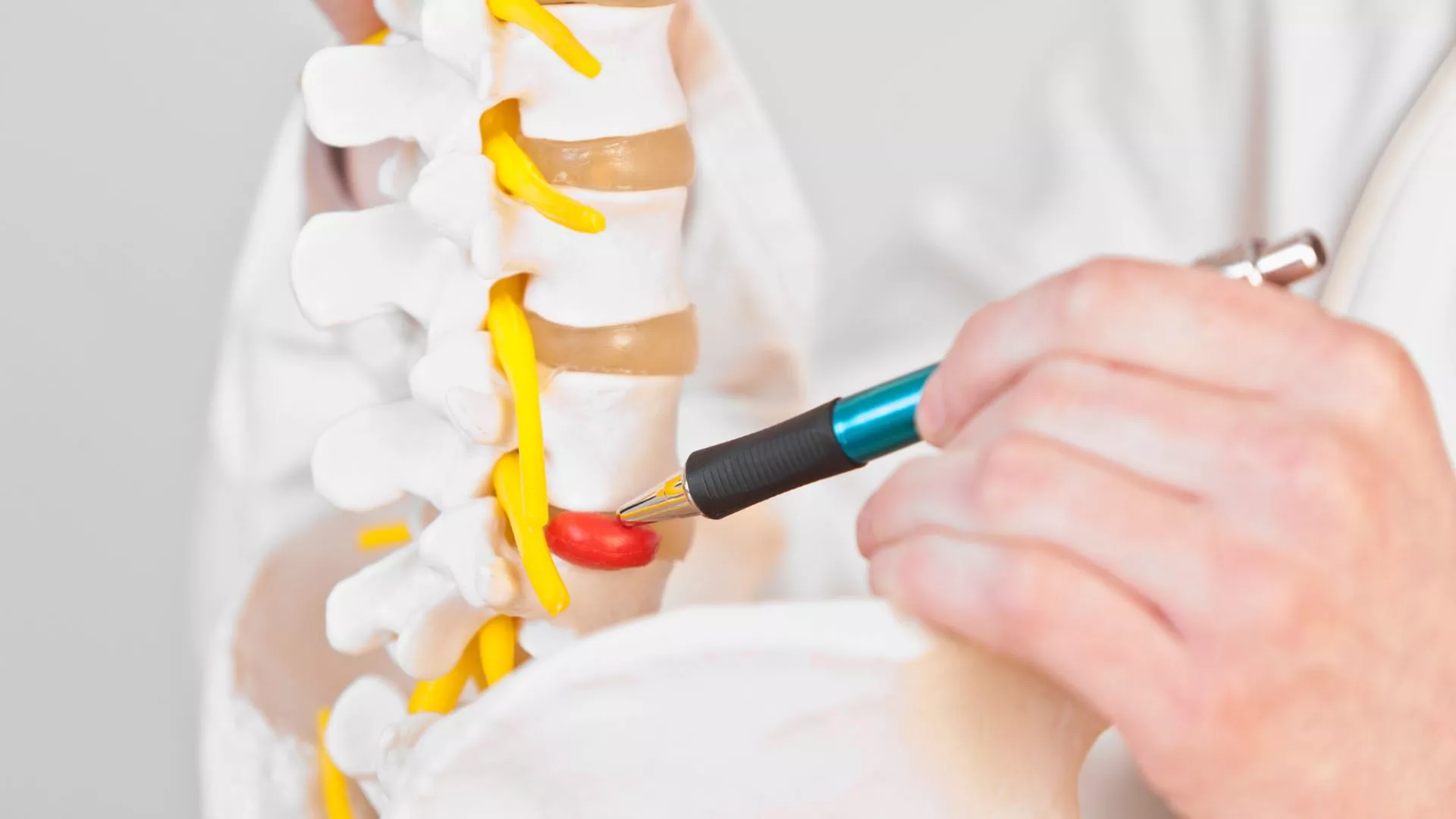
Symptoms of a herniated disc includes:
- Back pain, which may be dull or sharp and may be worse when you move or touch the affected area
- Pain that radiates down the leg or arm (depending on the location of the herniated disc)
- Numbness or tingling in the leg or arm
- Weakness in the leg or arm
This can cause pain and disability in the lower back, neck, and arm(s). The problem can also radiate into other parts of the body. If you experience any of these symptoms, see a Osteopath as soon as possible.
Spinal Stenosis:
Spinal stenosis is a condition in which the space around the spinal cord narrows, causing pressure on the nerves and leading to back pain. It is most commonly found in the lower back (lumbar spine) and the neck (cervical spine).
Symptoms of spinal stenosis includes:
- Back pain, which may be worse with activity or prolonged standing or walking
- Leg pain or numbness that gets worse when walking and improves when sitting
- Weakness in the legs
- Difficulty with balance and coordination
Spinal stenosis can be caused by a variety of factors, including degenerative changes in the spine, such as herniated discs or osteoarthritis, and spinal injuries.
Spondylolisthesis:
Spondylolisthesis is a condition in which one vertebra slips out of place and onto the vertebra below it, causing pain and other problems. It is most commonly found in the lower back (lumbar spine).
Symptoms of spondylolisthesis may include:
- Back pain, which may be worse with activity or prolonged standing or walking
- Leg pain or numbness
- Weakness in the legs
- Difficulty with balance and coordination
Spondylolisthesis can be caused by a variety of factors, including degenerative changes in the spine, such as osteoarthritis or a herniated disc, and spinal injuries.
Facet Joint Strain:
Facets are the joints at the back of the spine behind the vertebrae that link each spinal segment together (one on either side of the spine). They allow for a great deal of movement and support in the spine. However, they can also be susceptible to strain and injury. Injuries to facets can occur as a result of a number of factors, such as overexertion, improper posture, or genetics. Patients can strain the capsule of these joints by doing a sudden movement such as lifting or twisting which can cause acute pain which is aggravated by turning over in bed, standing up from sitting, or walking. The most common joint affected is the hip, but patients can also have pain in the knee, ankle, and shoulder. The pain is usually localized to one side of the body and worsens with movement.
Sciatica Nerve Compression:
Sciatica nerve compression is a common pain condition that can occur in the lower back, buttock, and/or leg. The condition is caused by the compression of the lower lumbar nerves, which can be due to various factors such as arthritis, tight muscles, a herniated disk or by increased weight-bearing during pregnancy. Sciatica symptoms can vary, but may include a shooting pain that typically radiates from the back into the buttock and down the back of the leg (or legs), numbness or tingling, and difficulty moving or standing.
Sacro-iliac Joint Pain:
Low back pain is a problem that affects a large number of people. The sacro-iliac joints are on either side of the sacrum, the triangular bone found below the spine, which connects to the pelvis. Diseases can arise at these joints because of hyper or hypo mobility (too much or too little movement). This can cause pain in the lower back area. It is essential that one distinguish between sciatica caused by a spinal sacroiliac joint issue and pain that is compressed by a slipped or strained nerve or pinched low back. Normally, women experience problems-related to these joints during Pregnancy due to the hormone relaxin, which causes many joints in the body to relax in preparation for birth and the presence of the baby growing.
Arthralgia, Joint Inflammation Back Pain:
Joint inflammation, also known as arthralgia, is a type of pain, swelling, and stiffness in the joints caused by an underlying medical condition. It can affect any joint in the body but is most common in the knees, hips, hands and feet. Symptoms may include redness or warmth around the joint, swelling of the joint tissue, pain when moving or putting pressure on the joint, and restricted range of motion. Joint inflammation can be caused by arthritis (such as rheumatoid arthritis or osteoarthritis), bursitis (inflammation of a fluid-filled sac near a joint), tendonitis (inflammation of the tendon connecting muscles to bones) and other inflammatory conditions.
Osteopathy can treat various conditions such as joint inflammation, back pain and other forms of chronic pain. Osteopathic techniques involve gentle manipulation of soft tissue and joints in order to reduce pain and restore normal function. Osteopaths use their hands to apply gentle pressure on specific areas of the body in order to stretch muscles, release tension and improve circulation. Osteopathic treatments can also help reduce inflammation and improve mobility in affected joints. Patients often report improved range of motion and less pain after osteopathic treatments for joint inflammation back pain. Osteopathy is a safe and effective way to manage chronic pain associated with joint inflammation back pain without having to rely on medication or surgery.
Spinal infection:
Spinal infection is a medical condition in which the spine becomes infected and inflamed. It can be caused by bacteria, fungi or viruses, and is often accompanied by fever, pain and swelling. Osteopathy is a form of manual therapy that focuses on treating the musculoskeletal system. It works to reduce inflammation, improve mobility and restore balance to the body.
Osteopathic treatment for spinal infection typically involves joint manipulation, massage and stretching to reduce pain and stiffness. Additionally, osteopaths may use specific exercises to help strengthen weakened muscles, as well as advise on lifestyle changes such as stress reduction techniques or improved posture. In some cases, medication may also be prescribed to help fight off the infection. With proper care and treatment from an experienced osteopath, patients are often able to manage their spinal infections more effectively.
Arthritis Back Pain Relief:
Arthritis is a term used to describe a group of conditions that cause inflammation in the joints. There are many different types of arthritis, including osteoarthritis, rheumatoid arthritis, and psoriatic arthritis, among others.
Osteoarthritis is a degenerative joint disease that causes the cartilage in the joints to wear away, leading to pain and stiffness. The spine is one of the joints that can be affected by osteoarthritis.
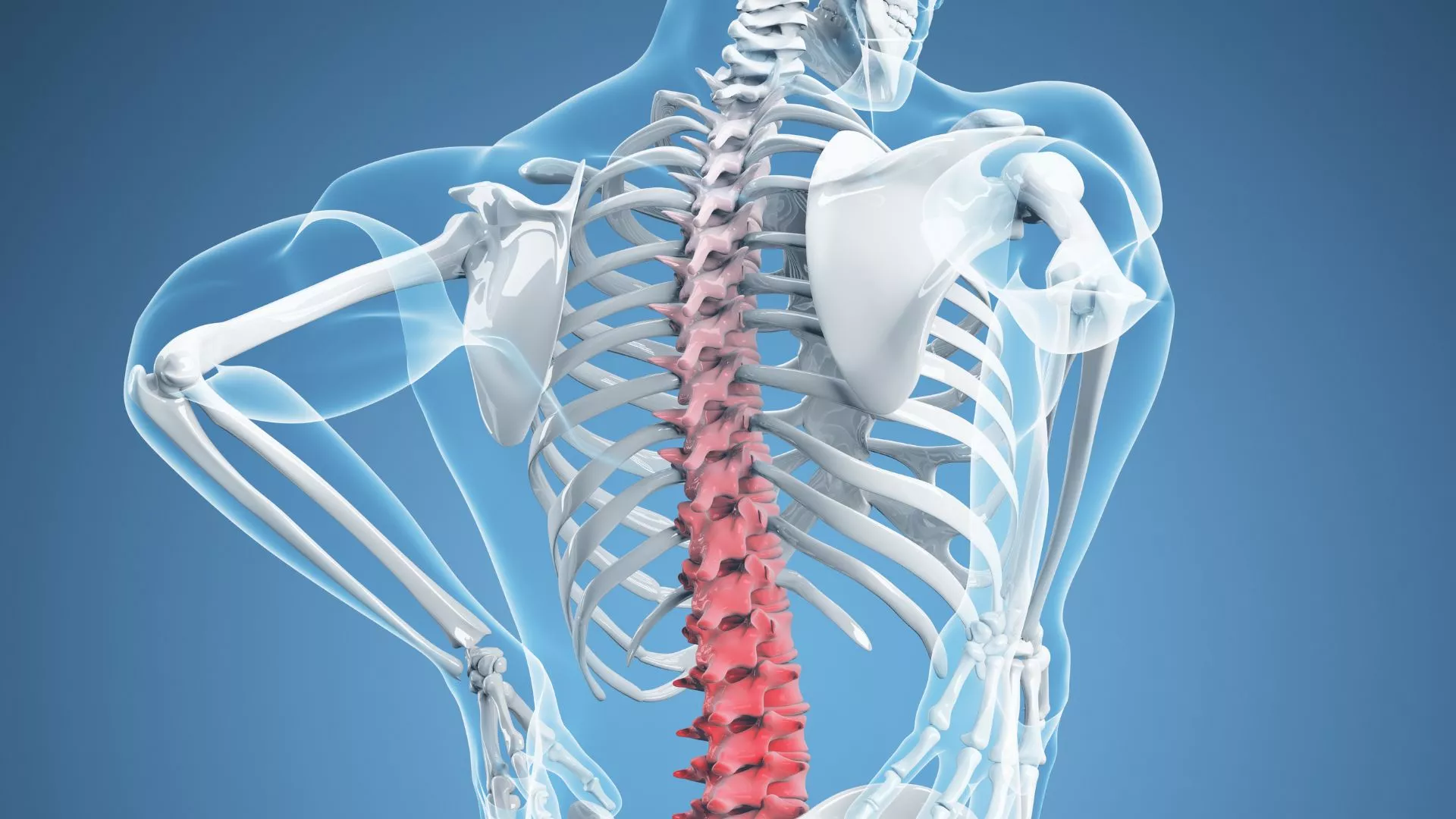
Rheumatoid Arthritis is an autoimmune disorder that causes inflammation in the joints, leading to pain, stiffness, and swelling. It can affect any joint in the body, including those in the spine.
Psoriatic Arthritis is a type of arthritis that occurs in people with psoriasis, a skin condition that causes red, scaly patches. It can affect the joints of the spine, as well as other joints in the body.
Symptoms of arthritis includes:
- Pain and stiffness in the joints, which may be worse in the morning or after periods of inactivity
- Swelling in the joints
- Decreased range of motion in the affected joints
Poor Posture:
Poor posture can lead to back pain, as it can cause strain on the muscles and ligaments in the back. Good posture, on the other hand, helps to evenly distribute the weight and stress placed on the spine and supporting muscles, reducing the risk of pain and other problems.
Some tips for maintaining good posture include:
- Stand up straight, with your shoulders relaxed and your feet shoulder-width apart.
- Keep your head level, with your chin parallel to the ground.
- Keep your feet shoulder-width apart, with your weight evenly distributed on both feet.
- Avoid standing or sitting for long periods of time in the same position. Take frequent breaks to stretch and move around.
- Use a lumbar roll or other supportive device to maintain the natural curve of your lower back when sitting.
- When lifting heavy objects, keep the object close to your body, bend your knees, and lift with your legs, not your back.
If you already have back pain due to poor posture, correcting your posture can often help to alleviate the pain. Stretching and strengthening exercises may also be helpful in improving your posture and reducing back pain.
Osteopathy vs Chiropractor vs Physiotherapy – treatment for lower back pain
Osteopathy is a holistic form of healthcare that looks at the body as a whole system and aims to treat the underlying causes of pain or injury rather than just the symptoms. This makes it effective treatment for back pain than either chiropractic or physiotherapy. Chiropractic focuses on manipulating the spine, while physiotherapy works on specific muscles, but neither attempts to address the root cause of an issue. Osteopathy is more comprehensive and takes into account things such as posture, lifestyle, diet, emotional wellbeing and any other factors that may be contributing to pain or dysfunction. It also uses hands-on techniques such as massage, joint mobilisation and stretching to restore normal function. Osteopaths look for restrictions in movement, which can help identify areas to target for treatment and bring relief from back pain and sciatica.
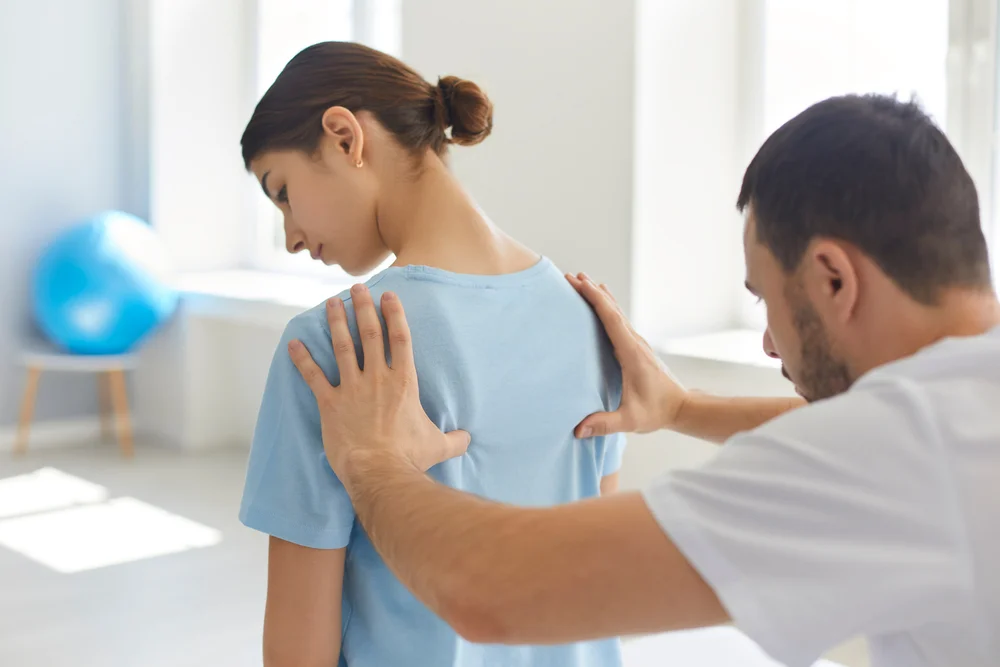
Osteopathy and Acupuncture Treatment for lower back pain
Osteopathy and Acupuncture Treatment are two of the most popular treatments for lower back pain. Osteopathy is a hands-on manual approach that focuses on the musculoskeletal system, which is designed to treat and prevent musculoskeletal pain. It involves manipulating joints, muscles, and soft tissue to improve mobility and reduce pain. Acupuncture is also an effective treatment option for lower back pain. It works by stimulating certain points in the body to reduce inflammation and pain. This ancient Chinese technique has been used for centuries and can be very effective in relieving lower back pain. Both treatments have their own advantages and disadvantages; however, they can both provide relief from lower back pain when used properly. They should always be discussed with your doctor before beginning any treatment plan.
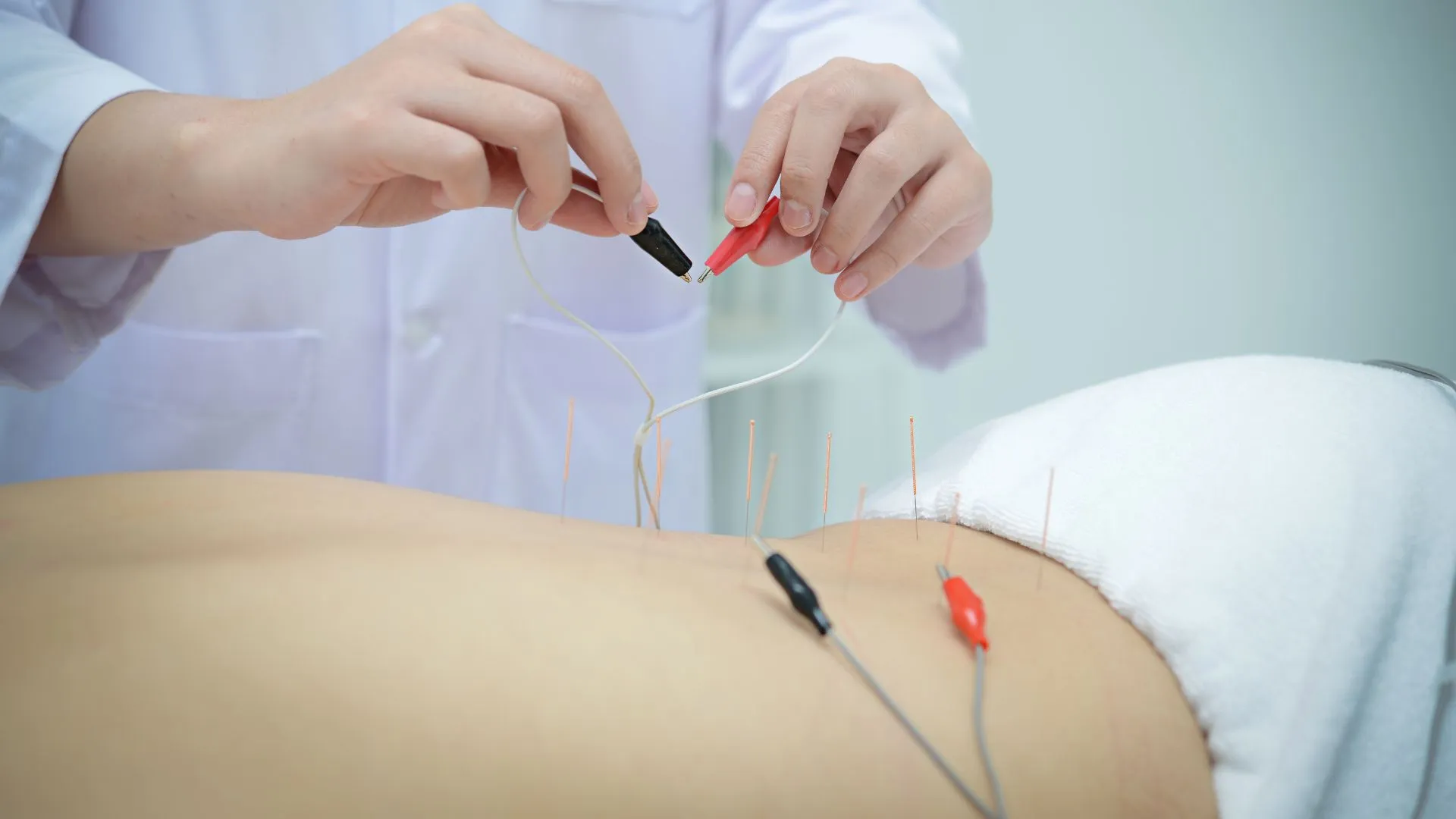
Spinal Manipulation for back pain in Flamborough Ontario
Osteopathic manual therapists have a distinct technique from other types of physicians in regards to assessing joint problems and attempting to improve the effectiveness of manual therapies. Looking into the biomechanics of the spine and combined body mechanics as a whole, an osteopath can produce therapeutic interventions for back pain more effectively. Osteopaths may assist patients with acute lower back discomfort as well as persistent lower back discomfort which make up the majority of osteopathy treatment.
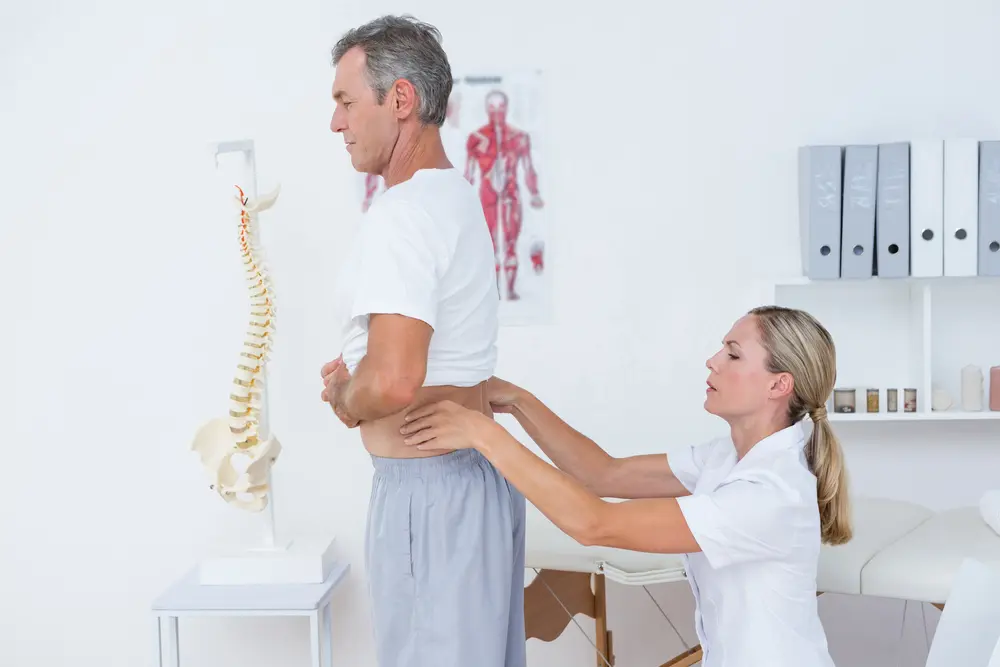
At contemporary times, osteopaths are incorporating rehabilitation exercises that used to be the sole domain of the physiotherapists into their practices. Osteopath practitioners know that although traditional osteopathic therapy by using their hands can be highly effective in alleviating pain in the back, this doesn’t actually strengthen the back. Osteopathic practitioners strive to produce the best results by combining physical rehabilitative exercises.
Back Pain relief, pain-free:
Improved function
Prevention
Causes of lower back injury:
There are many causes of back pain that vary in severity. Serious causes of back pain can be life-altering, but most cases are not so severe. There are many, often less serious causes of back pain that can be treated by our osteopathic practitioners. In most of the cases, it’s because of strains in the many discs, bones ligaments, and muscles that make up the spine.
The most frequently cited back pain causes are:

Studies and research have proposed many theories on just how lower back injuries come about; such as poor posture (slouching), sedentary lifestyle, recurring episodes of repetitive stress, and so on. Poor posture (slouching), sitting for prolonged periods, repeating tasks in particular positions, and even “running in the family” and misalignment of the pelvis, hips, or feet are common problems that could develop into back injuries. There’s “no one” reason lower back pain develops, especially when it stems from a different condition than the one experienced by another individual. The sequence of events that brought about your back pain might be somewhat different from the unfolding of somebody else’s. Lists of possible causes abound, including trauma (slip and fall, car accident, etc.) as well as no motive. It is always only a matter of time before it becomes more severe.
There’s a list of general factors that can lead to lower back pain.

Why Osteopathy Works So Well for People Who Has Back Pain?
There are many reasons why osteopathy works so well for people who have back pain. Osteopathy is a form of manual therapy that uses massage, stretching, and joint mobilization to help relieve pain and improve function. It can help to restore balance and mobility to the tissues that surround the spine, which can help to reduce inflammation and pain. Osteopathy can also help to improve posture and alignment, which can further reduce the risk of back pain.
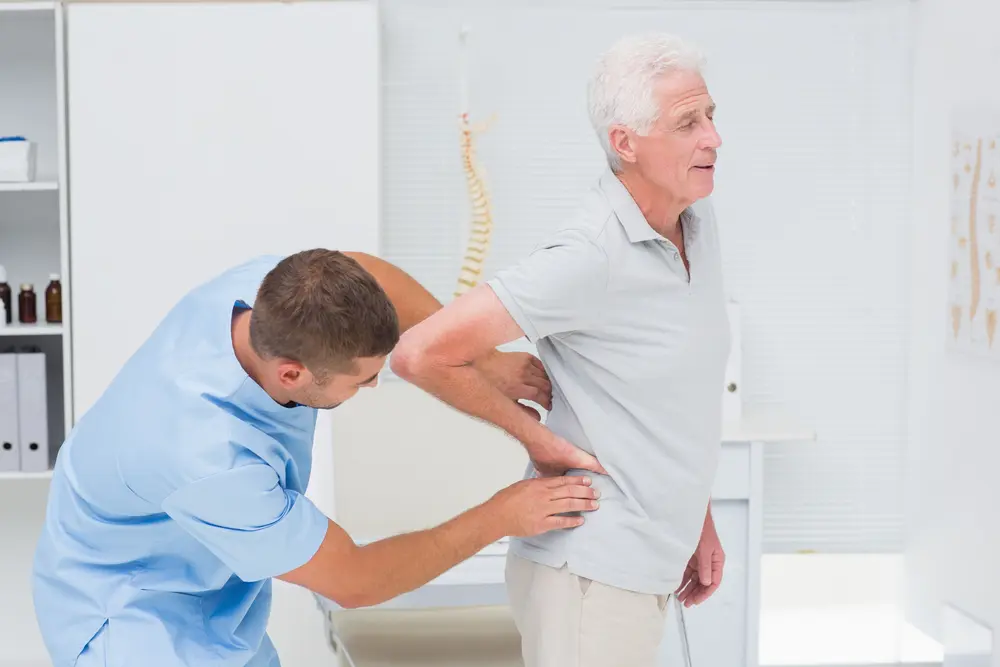
Could Having Pain In The Back Mean There Is Something Very Serious Happening?
As primary health care professionals, osteopathic practitioners are specially trained to distinguish between back pain that results from common causes (i.e., joint inflammation) and less serious back pain resulting from more-serious pathology (e.g., fracture, infection, or a tumor) and refer patients for the appropriate medical treatment as required.
Back pain could be caused by viscerosomatic reconnection. Examples of this type of back pain could be back pain that occurs during your period or discomfort on your shoulder, with irritation of your gallbladder. A thorough medical history and an osteopathic exam will allow your osteopath to distinguish between back pain that has an underlying musculoskeletal cause or visceral re-connection.
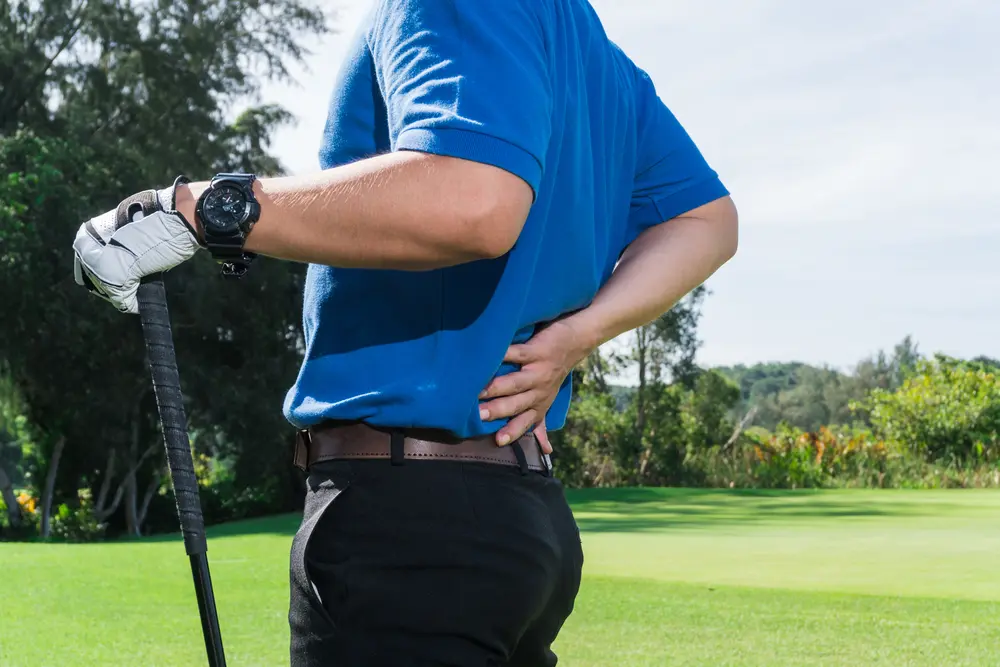
When to see your Medical Doctor?
The majority of back pain improves through self-care and home treatments generally after two weeks. If not, it is important to see your doctor. In some cases, back pain could indicate an issue with your medical condition. Seek immediate help if your back pain:
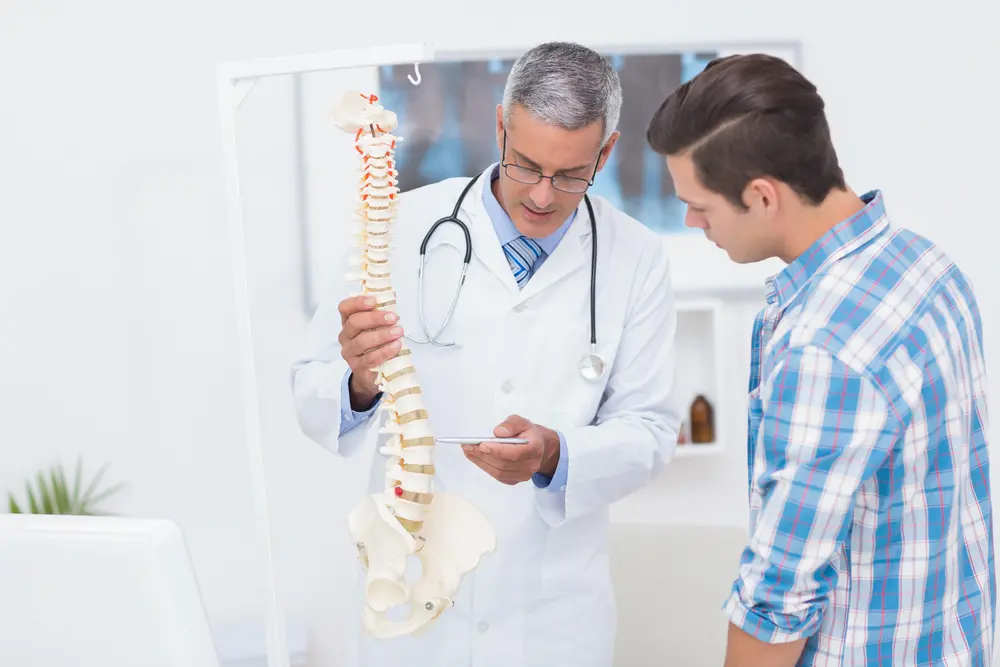
Consult a physician if your back pain persists, it can cause weakness, numbness, or tingling sensations in the legs. it can also affect both legs, especially where the pain extends beyond the knees. Consult your doctor when you begin experiencing back pain at first after the age of 50 or in the event that you’ve been diagnosed with osteoporosis or cancer and steroid usage, or abuse of alcohol or drugs.



